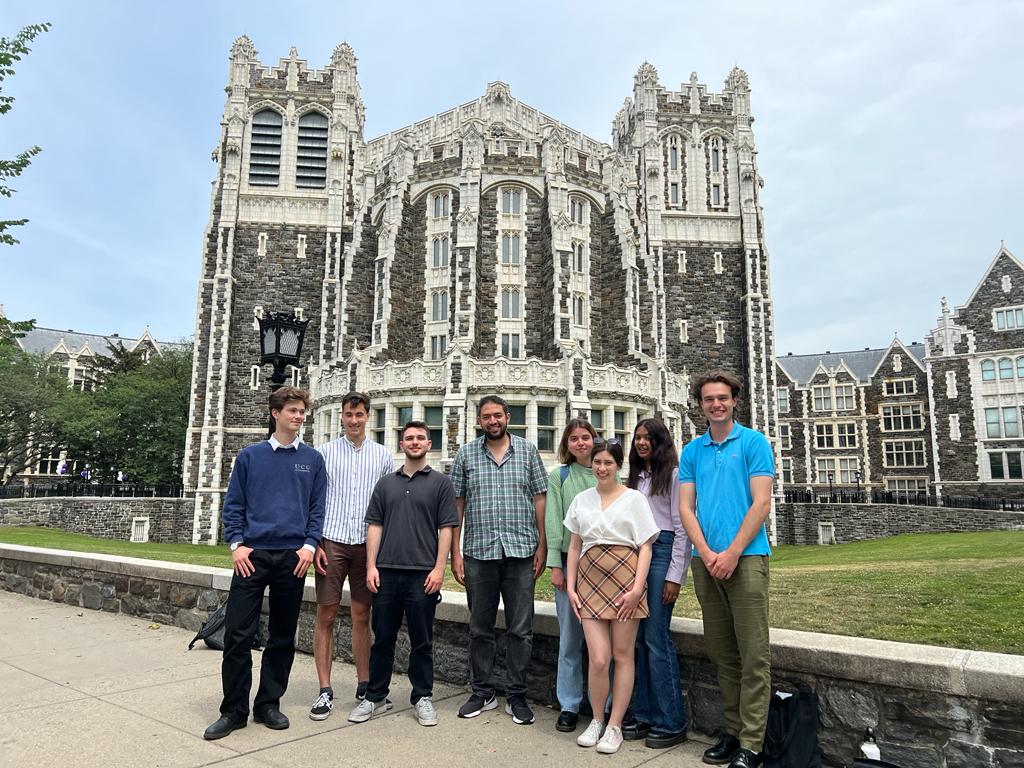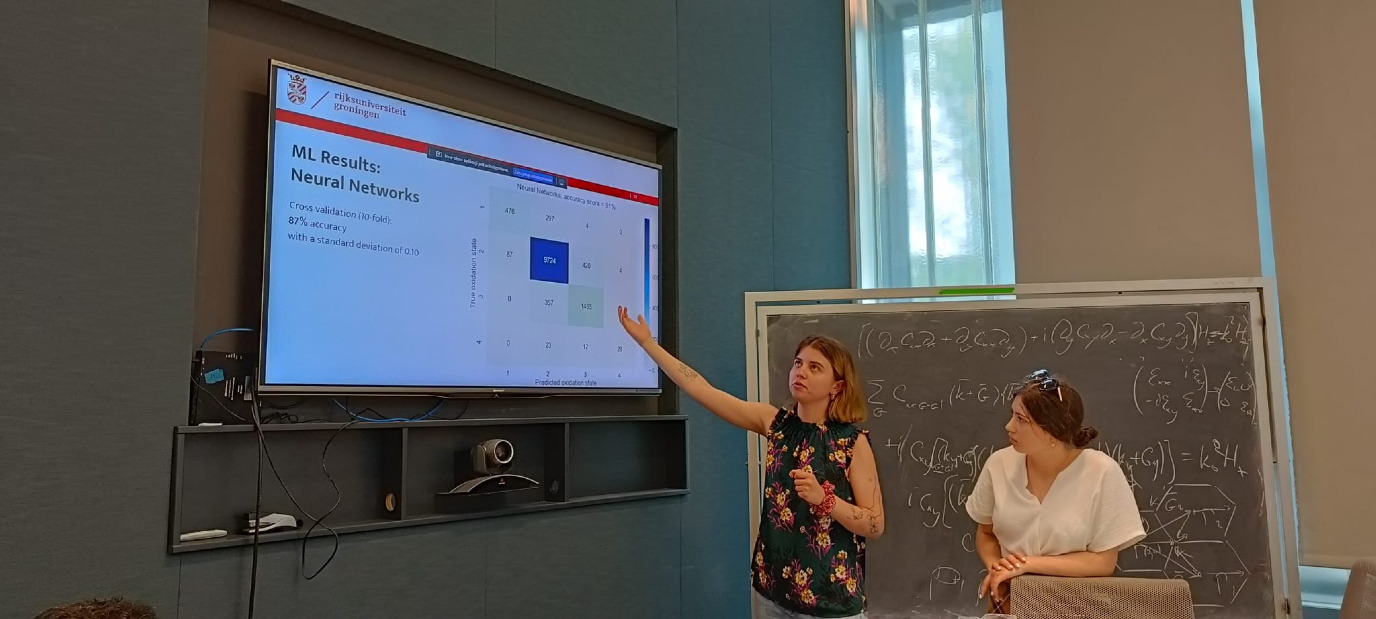Published article with UCG students and research groups from Yale University and NIH, USA
We are proud to announce that our students Katarzyna Kapuścińska, Zofia Dukała, Mekhola Doha, and Eman Ansari have co-authored an article published in the Journal of Chemical Information and Modeling. This publication is a result of a collaborative effort among students participating in the Year 2 Project 'Taking lessons from nature on how to use solar energy,' under the instruction of Dr. Muhamed Amin, and research groups from Yale University and the National Institutes of Health (NIH), part of the U.S. Department of Health and Human Services. During the course, students developed a machine learning algorithm to predict the oxidation states of metals within biological systems and proteins. Following Dr. Muhamed Amin, this tool can be used to gain a deeper understanding of photosynethis and can aid in designing bio-inspired molecules capable of converting solar energy into chemical energy. Prior to the publication, students of the Year 2 Project presented their research at Yale University and The City University of New York.

Nature offers keys in harvesting solar power
In the Year 2 Project, a highly interdisciplinary course that includes knowledge from Physics, Chemistry, Biology and Computer Science, students gain a deeper understanding of the so-called Photosystem ΙΙ. This is a protein complex occurring in membranes of higher plants, algae, and cyanobacteria, where it converts light energy into so-called redox energy that in turn catalyses the oxidation of water. As such, the protein-complex Photosystem ΙΙ plays a functional role in photosynthesis – the process in which plants convert sunlight into energy (in photosynthesis, plants contract glucose molecules, or other sugars, from water and carbon dioxide, and release oxygen as a byproduct). In fact, this protein-compex is more efficient and economical at employing solar energy than any artificial system built so far.

Designing bio-inspired molecules that convert solar energy into chemical energy
'Proteins are essential molecules for our life, some of them contain metals that are important for their function, for example Hemoglobin', Dr. Amin explains. 'To resolve their structure, they are usually imaged with high energy X-ray, which may cause radiation damage. This radiation damage alters the oxidation states of the metals in protein. Thus, it is important to know the real oxidation state of the metal in proteins to understand their function.'
Throughout the course, students developed a machine learning algorithm that uses a database of metals in small compounds imaged with a low dose of X-ray to predict the oxidation states of metals in proteins. Amin: 'Our tool is very important for evaluating X-ray structures and has applications in understanding the photosynthesis reaction. It can help us design bio-inspired molecules that convert solar energy into chemical energy.'
| Last modified: | 17 January 2024 3.49 p.m. |
More news
-
11 December 2023
Join the 'Language and AI' community
As a part of the Jantina Tammes School, the 'Language and AI' theme is an interdisciplinary initiative that aims to encourage collaboration among academics, PhD candidates, students, and industry representatives who share a keen interest in the...
-
15 May 2023
Impact: 'The Good, the Bad, and the Necessary' of sexual education
In the coming weeks the nominees for the Ben Feringa Impact Award (BFIA) 2023 will introduce themselves and their impactful research or project. This week in the category student: The student team behind the Sexual Wellness Education Initiative...
